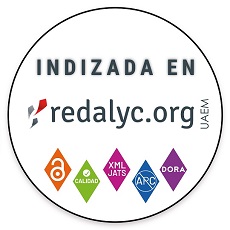Sticky inflationary expectations and inflation targeting in (some) emerging and less developed economies
Expectativas de inflación “pegajosas” y metas de inflación en (algunos) países emergentes y de menor desarrollo
Expectativas de estagflação e metas de inflação em (alguns) países emergentes e menos desenvolvidos
DOI:
https://doi.org/10.15446/cuadecon.v40n82.79547Palabras clave:
Inflation Targeting, Expected Inflation, Taylor-Rules. (en)metas de inflação, inflação esperada, regras de Taylor (pt)
metas de inflación, inflación esperada, reglas de Taylor (es)
Descargas
We describe the experience of some economies that struggle to consolidate Inflation Targeting. We document the resilience of inflationary expectations during the first years after adoption by Israel, Brazil, Guatemala, Mexico, South Africa, and Turkey. The benchmark case of New Zealand is also described, and the experience of Argentina is presented as one of the few examples where Inflation Targeting failed and was eventually abandoned.
En este artículo se describe la experiencia de algunas economías que lucharon por consolidar metas de inflación. Se documenta la resiliencia de las expectativas de inflación durante los primeros años en Israel, Brasil, Guatemala, México, Sudáfrica y Turquía. Los casos de Nueva Zelandia y Argentina —donde las metas fracasaron— se analizaron con fines comparativos.
Neste artigo descreve-se a experiência de algumas economias que lutaram para consolidar metas de inflação. Documenta-se a resiliência das expectativas de inflação durante os primeiros anos em Israel, Brasil, Guatemala, México, África do Sul e Turquia. Os casos da Nova Zelândia e Argentina—onde as metas falharam— foram analisados para fins comparativos.
Referencias
Ball, L. (1999). Policy rules for open economies. In J. Taylor (ed.), Monetary Policy Rules (pp. 127-156). University of Chicago Press.
Bernanke, B., Laubach, T., Mishkin, F., & Posen, A. (1999). Inflation targeting: Lessons from the international experience. Princeton University Press.
Blanchard, O., & Galí, J. (2007). Real wage rigidities and the New-Keynesian model. Journal of Money, Credit, and Banking, 39(1), 35-65.
Bruno, M. (1988). Inflation stabilization: The experience of Israel, Argentina, Brazil, Bolivia, and Mexico. The MIT Press.
Calvo, G. (1978). On the time consistency of optimal policy in a monetary economy. Econometrica, 46(6), 1411-1428.
Calvo, G., Izquierdo, A., & Mejia, L. (2004). On the empirics of sudden stops: The relevance of balance-sheet effects (Working Paper, 10520), National Bureau of Economic Research, Inc.
Caputo, R., & Liendo, F. (2005). Monetary policy, exchange rate and inflation inertia in Chile: A structural approach (Working Paper, 352). Central Bank of Chile.
Carare, A., & Stone, M. (2003). Inflation targeting regimes (Working Paper, No. 03/09). IMF.
Céspedes, L., Chang R., & Velasco, A. (2014). Is inflation targeting still on target? The recent experience of Latin America. International Finance, 17(2), 185-208.
Civcir, I., & Akçaglayan, A. (2010). Inflation targeting and the exchange rate: Does it matter in Turkey? Journal of Policy Modeling, 32(3), 339-354.
Cobham, D. (2018). A comprehensive classification of monetary policy frameworks in advanced and emerging economies (Discussion Paper, 2018-01). Heriot-Watt University Economics.
Damill, M., Frenkel, R., & Rapetti, M. (2015). Macroeconomic Policy in Argentina During 2002–2013. Comparative Macroeconomic Studies, 10(57), 1-32.
Dornbusch, R., & Simonsen, M. (1987). Inflation stabilization with incomes policy support: A review of recent experience in Argentina, Brazil and Israel. New York: Group of Thirty.
Dornbusch, R., & Fischer, S. (1993). Moderate inflation. The World Bank Economic Review, 7(1), 1-44.
Genc, I., & Balcilar, M. (2012). Effectiveness of inflation targeting in Turkey. Emerging Markets Finance and Trade, 48(5), 35-47.
Johnson, D. (2003). The effect of inflation targets on the level of expected inflation in five countries. Review of Economics and Statistics, 55(4), 1076-1081.
Kim, S., & Yim, G. (2016). Endogeneity of inflation target (Working Paper, 2016-18). Economic Research Institute, Bank of Korea.
Kydland, F., & Prescott, E. (1977). Rules rather than discretion: The inconsistency of optimal plans. The Journal of Political Economy, 85(3), 473-492.
Laurens, B., Eckhold, K., King, D., Maehle, Ø. N., Naseer, N., & Durré, A. (2015). The journey to inflation targeting: Easier said than done. The case for transitional arrangements along the road (Working Paper, WP 15/136). IMF.
Leiderman, L., & Bar-Or, H. (2000). Monetary policy rules and transmission mechanisms under inflation targeting in Israel. Monetary policy: Rules and transmission mechanisms, 4, 393-426, Central Bank of Chile.
Leiderman, L., & Bufman, G. (2000). Inflation targeting under a crawling band exchange rate regime: Lessons from Israel. In M. Blejer, A. Ize, A. Leone, and S. Werlang (Eds.), Inflation targeting in practice (pp. 70-79). International Monetary Fund.
Levin, A., Natalucci, F., & Piger, J. (2004). The macroeconomic effects of inflationtargeting. Federal Reserve Bank of St. Louis Review, 86(4), 51-80.
Libman, E., & Palazzo, G. (2019). Inflation targeting, disinflation, and debt traps in Argentina. European Journal of Economics and Economic Policies: Intervention, 17, 1-28.
Ramos-Francia, M., & García, A. (2005). Reducing inflation through inflation targeting: The Mexican experience (Working Paper, 2005-01). Central Bank of Mexico.
Reinhart, C., & Végh, C. (1994). Inflation stabilization in chronic inflation countries. Mimeo, International Monetary Fund.
Schmidt-Hebbel, K., & Tapia, M. (2002). Monetary policy implementation and results in twenty inflation-targeting countries (Working Paper, 166). Central Bank of Chile.
Cómo citar
APA
ACM
ACS
ABNT
Chicago
Harvard
IEEE
MLA
Turabian
Vancouver
Descargar cita
Licencia
Derechos de autor 2021 Cuadernos de EconomíaCuadernos de Economía a través de la División de Bibliotecas de la Universidad Nacional de Colombia promueve y garantiza el acceso abierto de todos sus contenidos. Los artículos publicados por la revista se encuentran disponibles globalmente con acceso abierto y licenciados bajo los términos de Creative Commons Atribución-No_Comercial-Sin_Derivadas 4.0 Internacional (CC BY-NC-ND 4.0), lo que implica lo siguiente:




















